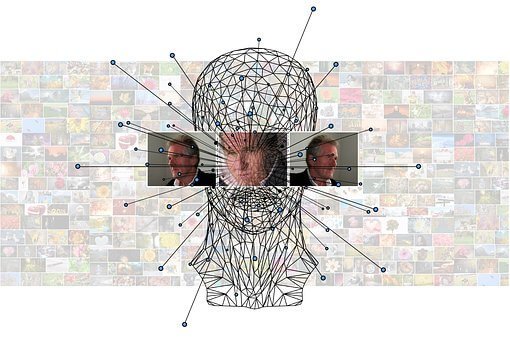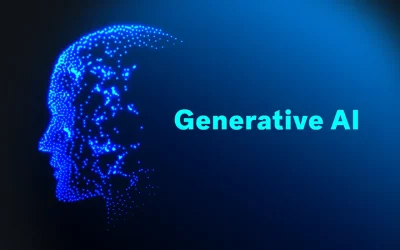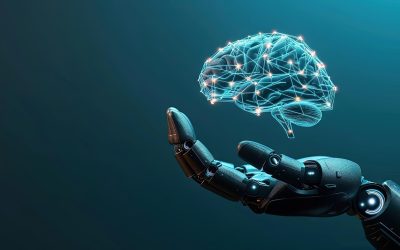These days, terms like data science, machine learning and artificial intelligence are sometimes mentioned interchangeably, albeit incorrectly. Data science, machine learning (ML), and artificial intelligence (AI) are interconnected fields that work together to analyze and make sense of large amounts of data. AI, ML, and data science are all related, but they serve different purposes and have different methods of operation.
Brief Definitions
In this post, we’ve outlined the relation between these technologies. But first, let’s have a quick look at what each of them stands for.
1- Data science

Data science refers to the field of study that deals with managing large amounts of data through modern tools and techniques to discover hidden patterns, extract meaningful insights, and make informed business decisions.
All processes involving gathering, organizing, and examining data are connected to the field of data science.
This interdisciplinary approach merges various fields of computer science, scientific processes and methods, and statistics in order to extract data in automated ways.
In order to mine big data, which is closely associated with the field, data science uses a diverse range of techniques, tools and algorithms gleaned from the fields. Data science professionals utilize mathematical statistics and machine learning techniques to handle a vast amount of data effectively.
2- Machine learning

In machine learning (ML), statistical methods are used to empower machines to learn without being programmed explicitly. The field focuses on letting algorithms learn from the provided data, collect insights, and make predictions on unanalyzed data based on the gathered information. In general, machine learning is based on three key models of learning algorithms:
- Supervised machine learning algorithms: a dataset is present with inputs and known outputs.
- Unsupervised machine learning algorithms: the machine learns from a dataset that comes with input variables only.
- Reinforcement machine learning algorithms: algorithms are used to select an action.
3- Artificial intelligence

Though it’s a broad term, at its core, artificial intelligence (AI) refers to the process of making machines able to simulate the human brain function. In other words, AI enables the machine to think without any human intervention.
In the modern technology landscape, artificial intelligence is divided into three types.
The first one is Weak AI. Weak AI performs only specific tasks like Apple Siri, Google assistant and Amazon’s Alexa.
The second type, general AI, revolves around the idea that a system can manage activities such as speaking, translating, identifying sounds and objects, and executing business or social transactions. General AI mirrors human intelligence, making it capable of performing any task a person can.
The other one is Strong AI that refers to building machines that are indistinguishable from the human mind.
4- How are all these fields related to each other?

Data science is an interdisciplinary discipline that brings together abilities from different fields like machine learning, statistics, and visualization. It enables us to draw valuable insights from large volumes of data, supporting well-founded decision-making processes in the areas of technology, scientific research, and business.
Machine learning, a subset of both data science and artificial intelligence, utilizes algorithms and statistical models to process data. This enables machines to learn and make predictions without explicit programming.
Artificial intelligence, a broader concept, focuses on creating machines capable of performing tasks that normally require human intelligence, including reasoning, learning, and problem-solving.
Data science serves as the foundation for machine learning and artificial intelligence by supplying the necessary data for these models to learn from. It integrates algorithms from machine learning and borrows ideas from traditional domain expertise, statistics, and mathematics to develop solutions. In this context, data science represents an all-encompassing term that includes aspects of machine learning for functionality.
Artificial intelligence serves as a valuable resource for data science in generating data insights. The primary distinction lies in data science’s comprehensive approach to data collection, preparation, and analysis, transcending solely algorithmic or statistical facets. Consequently, while machine learning and AI specialists concentrate on algorithm development throughout the project’s duration, data scientists must demonstrate adaptability by shifting between various data-focused roles as per the project’s requirements.
5- Examples and use cases to understand the interrelation between AI, ML and Data Science
Here are some real-world examples that illustrate the interrelation and differences between artificial intelligence, data science, and machine learning:
Recommendation systems
This is an example of AI in action. A recommendation system is a type of algorithm that makes personalized recommendations based on user data. Data science is involved in the collection and analysis of user data, while machine learning is used to develop the algorithm that powers the recommendation system.
One use case for recommendation systems powered by AI is Amazon’s personalized product recommendation algorithm. This system employs machine learning techniques and algorithms to understand user behavior information, including past transactions, product ratings, and browsing history, in order to provide personalized suggestions to clients.
Similarly, Netflix also uses a recommendation system to provide personalized movie and TV show recommendations to its users. These personalized recommendations enhance the user’s experience and increase the likelihood of making a purchase or continuing to use the platform.
Fraud detection
This is an example of where data science and machine learning come into play. Fraud detection involves analyzing large amounts of data to identify patterns and anomalies that may indicate fraudulent activity. Machine learning algorithms are used to identify these patterns and anomalies, while data science is involved in collecting and preparing the data for analysis.
For example, PayPal utilizes a combination of machine learning methods and data science approaches to examine substantial quantities of transaction information to pinpoint fraudulent actions. The system can identify patterns and anomalies within the data that could indicate fraudulent behavior, like atypical expenditure habits or suspicious IP locations. By harnessing these tools and strategies, PayPal can avert fraudulent transactions, safeguard its users, and preserve the trustworthiness of its digital environment.
Natural language processing (NLP)
This is an example of where all three concepts come together. Natural language processing involves analyzing human language to extract insights and meaning. Data science is used to collect and prepare the data, machine learning is used to develop the algorithms, and AI is used to power the natural language processing system.
For example, chatbots are developed by using NLP techniques. They are designed to simulate conversation with human users. AI-powered chatbots, such as ChatGPT, use machine learning algorithms and NLP techniques to understand natural language queries and provide more personalized responses.
To develop an AI-powered chatbot, developers must first collect and prepare a large dataset of training data. This dataset is used to train machine learning models that can understand and interpret natural language text. Once the models have been trained, they can be integrated into the chatbot to provide more intelligent and accurate responses.
Predictive maintenance
This is an example of where machine learning is used to predict future outcomes based on historical data. Predictive maintenance involves analyzing data from sensors to predict when equipment is likely to fail. Machine learning algorithms are used to identify patterns in the data that indicate potential problems, allowing maintenance teams to take corrective action before a failure occurs.
One of the most popular examples of predictive maintenance using machine learning is the case of General Electric (GE) and its use of the Predix platform. GE is a leading industrial software company.
GE implemented predictive maintenance using machine learning on its Predix platform, which collects sensor data from its equipment and analyzes it to predict when maintenance is required. The Predix platform uses advanced machine learning algorithms to detect patterns in the sensor data that indicate potential equipment failures. The platform is also designed to learn from historical data, improving its accuracy over time.
Conclusion
As we mentioned above, while there is overlap between these concepts, each one has a unique role to play in solving real-world problems. The interdependence of data science, machine learning, and artificial intelligence leads to the creation of powerful tools and technologies. These innovations help solve complex problems and drive advancements in various industries.



